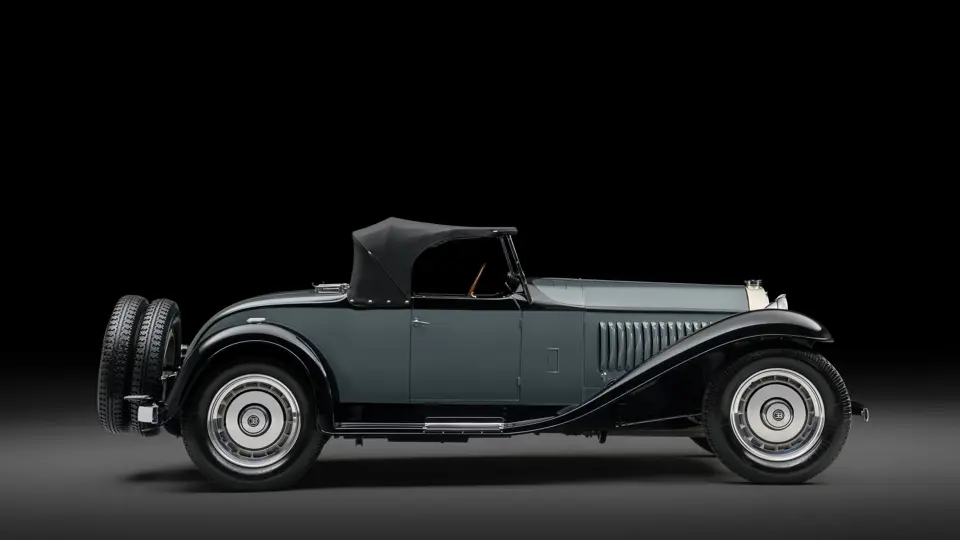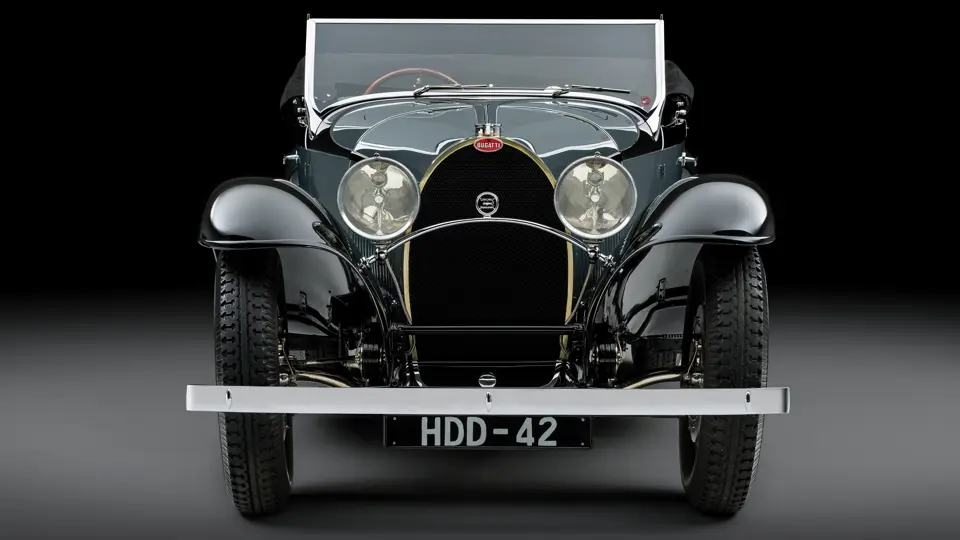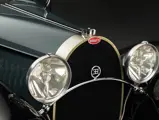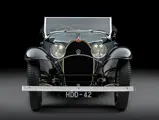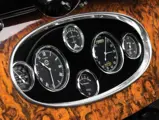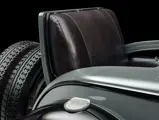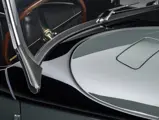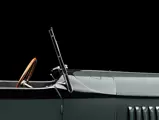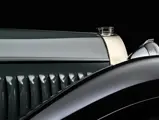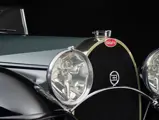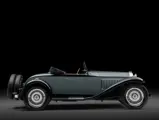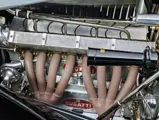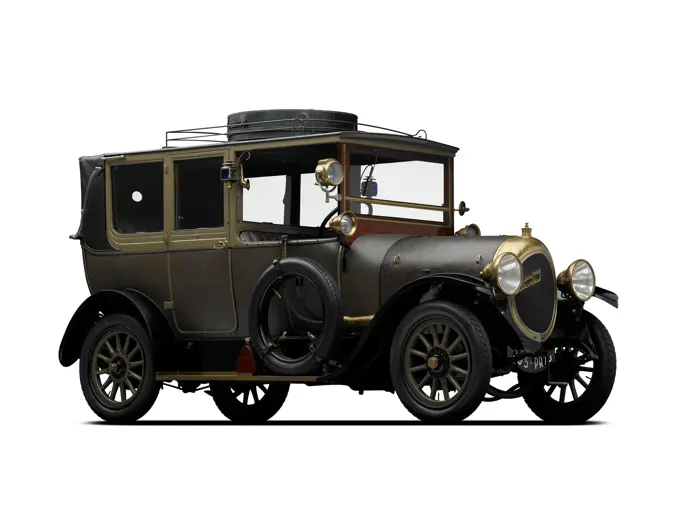
1931 Bugatti Type 50 Roadster
{{lr.item.text}}
€1,411,250 EUR | Sold
{{bidding.lot.reserveStatusFormatted}}
- The sole remaining example with its original Jean Bugatti-designed factory coachwork
- Initially owned by painter Andre Derain, co-founder of the Fauvism movement
- Documented with factory records including original bill of sale and report by David Sewell
- Featured in a road test in the July 1958 issue of Road & Track
- Breathtaking and extremely rare example of Jean Bugatti’s powerful open touring model
- L'unico esemplare rimasto con la carrozzeria originale, progettata da Jean Bugatti
- Inizialmente di proprietà del pittore Andre Derain, co-fondatore del Fauvismo
- Accompagnata da documenti che includono i registri di fabbrica, tra cui la fattura di vendita originale e la relazione di David Sewell
- Apparsa in una prova su strada, nel numero di luglio 1958 di Road & Track
- Esemplare strabiliante ed estremamente raro del modello da turismo, aperto, di Jean Bugatti
Introduced in 1930, the Bugatti Type 50 was a development of the Type 46 touring model that employed a powerful new engine. A mimic of the fabulously successful Miller racing motor, the new dual overhead-cam straight eight was equipped with two carburetors, a large supercharger, and dry sump lubrication; this same engine, in tuned form, was used in the Type 54 Grand Prix racecar. Of the 65 cars built, only four were clothed in factory roadster coachwork penned by Jean Bugatti, and this is the sole remaining example with its original coachwork.
According to the combined research of marque experts David Sewell and Pierre-Yves Laugier, including numerous factory records, chassis 50123 was ordered new in early 1931 by Andre Derain, one of France’s most celebrated 20th century painters. Widely recognised along with Henry Matisse as the co-founder of Fauvism, Derain associated with fellow artists like George Braque and Pablo Picasso. Despite the factory’s attempt to sell him a torpedo-style body, the painter insisted on roadster coachwork painted black with a yellow stripe, and he further requested separate front seats and a rear luggage compartment.
By 1935, the Bugatti passed to brewery owner Jean Trivier, who returned the car to Alsace for service. Two years later the Type 50 was imported to England by Jack Lemon Burton, who used it as personal car until the outbreak of World War II. Around 1942 Burton sold the original engine to American collector Eli Richardson, although after the war the owner sourced a different Type 50 motor (number 18, from chassis 50134). Very few Type 50s have their original engines as most were swapped due to problems.
Acquired by early 1954 by John Erskine-Hall of South Kensington, the Bugatti may have been owned briefly by the American tire manufacturer Ann Klein before being purchased in the late ‘50s by John Caperton of Louisville, Kentucky. An article in the July 1958 issue of Road & Track describes Mr. Caperton’s restoration of the car, which included tuning the engine to specifications of the contemporaneous Type 54 Grand Prix racecar, and thereby developing close to 300 hp; Road & Track recorded a remarkable 0-60 mph time of 8.0 seconds!
By 1962, the Type 50 was owned by John Hoggatt of Indianapolis, and following his passing the car was sold in 1970 to David Schiff of New York. The roadster remained with Mr. Schiff through at least 1988, during which time it was maintained by marque specialist Don Lefferts, including an engine rebuild in 1983. Purchased in August 1997 by New Jersey collector Oscar David, the Bugatti was sold to the esteemed Henry Petronis circa 2003, and it won a class award at the 2010 Pebble Beach Concours d’Elegance.
Since being acquired by the consignor the Type 50 has received additional restoration measures, and the owner has bolstered the car’s documentation by sourcing numerous factory records, including the original bill of sale to Mr. Derain and correspondence between he and Ettore Bugatti. Believed to be one of two surviving Type 50 roadsters and the sole example retaining its original Jean Bugatti-designed coachwork, this unique Type 50 would make a stunning addition to any collection. It claims the extraordinary provenance of ownership by Fauvist icon Andre Derain and boasts known ownership throughout its life. Ideal for spirited drives or presentation at premium concours d’elegance, this important roadster beckons Bugatti enthusiasts worldwide.
Introdotta sul mercato nel 1930, la Bugatti Tipo 50, ero uno sviluppo del modello stradale Tipo 46 con l’aggiunta di un nuovo, più potente, motore. Fortemente ispirato al favoloso motore da corsa Miller, la nuova unità ad otto cilindri in linea, con doppio albero a camme in testa, era equipaggiato con due carburatori, un grande compressore e aveva la lubrificazione a carter secco. Questo stesso motore, leggermente preparato, sarà poi utilizzato nella macchina da Grand Prix Tipo 54. Delle 65 vetture costruite, solo quattro sono state vestite con una carrozzeria aperta firmata da Jean Bugatti, e, questo, è l'unico esemplare rimasto con la sua carrozzeria originale.
Secondo la ricerca combinata degli esperti del marchio David Sewell e Pierre-Yves Laugier, con l’aggiunta di numerosi documenti di produzione, il telaio 50123 è stato ordinato nuovo, all'inizio del 1931, da Andre Derain, uno dei pittori francesi più famosi del 20° secolo. Ampiamente riconosciuto insieme a Henry Matisse come co-fondatore di Fauvismo, Derain è associato ad artisti come George Braque e Pablo Picasso. Nonostante il tentativo della fabbrica di vendergli una vettura con carrozzeria Torpedo, il pittore ha insistito per ottenere una carrozzeria Roadster, dipinta di nero con una striscia gialla, ed ha espressamente richiesto di avere i sedili anteriori separati e un vano bagagli posteriore.
Nel 1935, la Bugatti passò al proprietario del birrificio Jean Trivier, che riportò l’auto in Alsazia per effettuare un tagliando. Due anni dopo, la Tipo 50 è stata importata in Inghilterra da Jack Lemon Burton, che l’ha utilizzata come auto personale fino allo scoppio della seconda guerra mondiale. Intorno al 1942, Burton vende il motore originale al collezionista americano Eli Richardson, e, appena dopo la guerra, compra un altro motore Tipe 50 (il numero 18, proveniente dal telaio 50134). Pochissime Tipo 50 hanno il loro motore originale, dato che molti sono stati cambiati a causa di problemi meccanici.
Acquistata all'inizio del 1954 da John Erskine-Hall di South Kensington, la Bugatti potrebbe essere stata di breve proprietà del produttore americano di pneumatici Ann Klein, prima di essere comprata, alla fine degli anni '50, da John Caperton di Louisville, nel Kentucky. Un articolo del numero di luglio del 1958 di Road & Track, descrive il restauro della vettura eseguito dal sig. Caperton, che comprendeva la messa a punto del motore con le specifiche della più moderna vettura da corsa Tipo 54 Grand Prix, quindi capace di sviluppare circa 300 CV. Nella prova Road & Track ha registrato il tempo straordinario, sullo 0-60 mph (circa 100 km/h) di 8,0 secondi!
Nel 1962, la Tipo 50 è di proprietà di John Hoggatt di Indianapolis, e, nel 1970, dopo la sua scomparsa, viene venduta a David Schiff di New York. La Bugatti Roadster rimane con il Sig. Schiff almeno fin al 1988, periodo durante il quale viene seguita dallo specialista della marca Don Lefferts, che rifà il motore nel 1983. Acquistata nell'agosto 1997 dal collezionista del New Jersey Oscar David, la Bugatti è poi venduta, verso il 2003, allo stimato Henry Petronis, che l’ha portata a vincere un premio di classe al Concours d'Elegance di Pebble Beach del 2010.
Dal momento dell'acquisto da parte del conferente, la Tipo 50 ha ricevuto ulteriori cure, ed il proprietario ha rafforzato ulteriormente la documentazione dell'auto, acquistando numerosi documenti di fabbrica, tra cui la fattura originale di vendita a Mr. Derain e la corrispondenza tra lui ed Ettore Bugatti. Ritenuta una delle sole due Roadster su base Tipo 50 sopravvissute e l'unico esemplare che conserva la sua carrozzeria originale disegnata da Jean Bugatti, questa esclusiva Tipo 50 sarebbe un'aggiunta straordinaria a qualsiasi collezione. La vettura rivendica anche la straordinaria provenienza dalla proprietà dell'icona del fauvismo, Andre Derain e vanta una storia conosciuta, completa di tutti i proprietari. Ideale per piacevoli scorribande automobilistiche, o presentazioni in occasione di prestigiosi concorsi d'eleganza, questa importante roadster è una tentazione per gli appassionati di Bugatti in tutto il mondo.




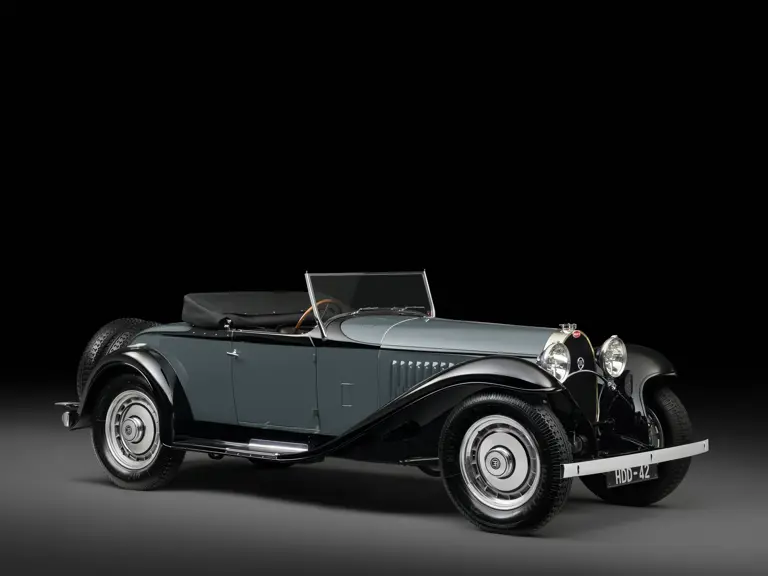

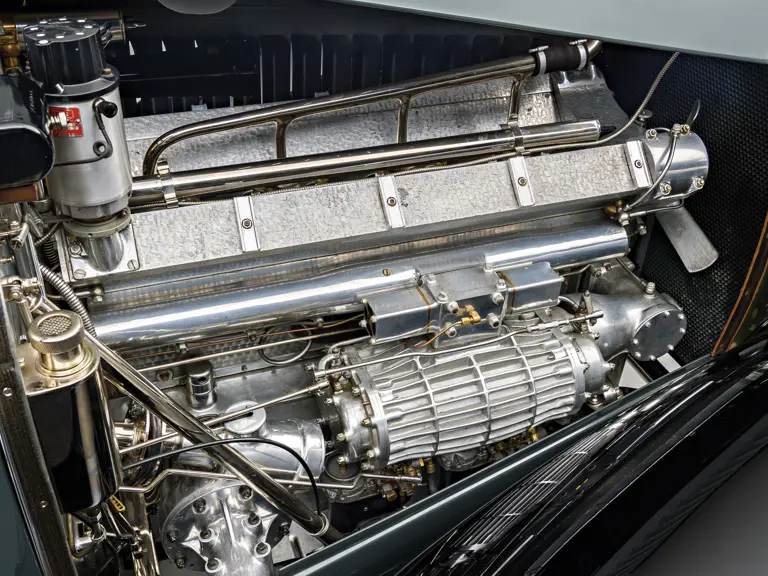
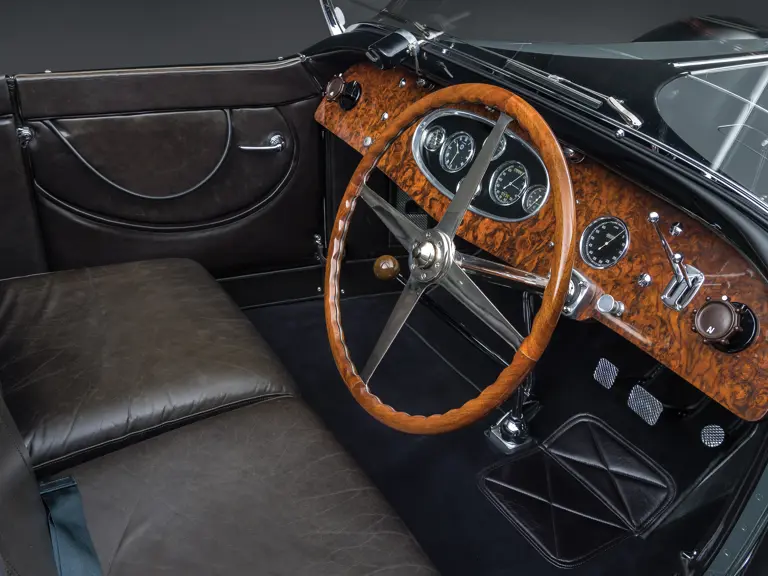
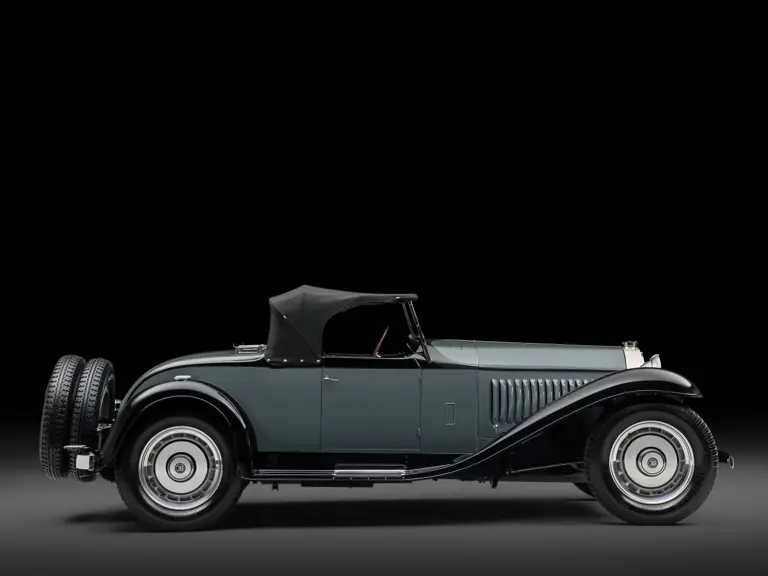
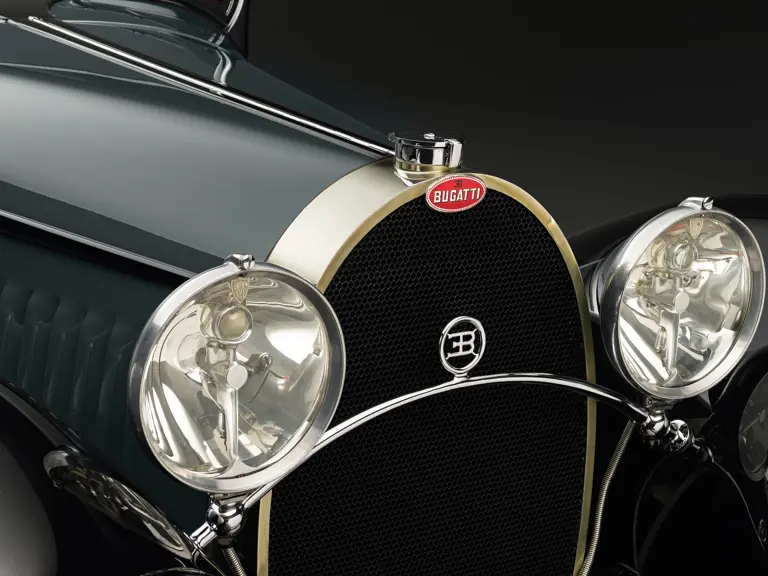


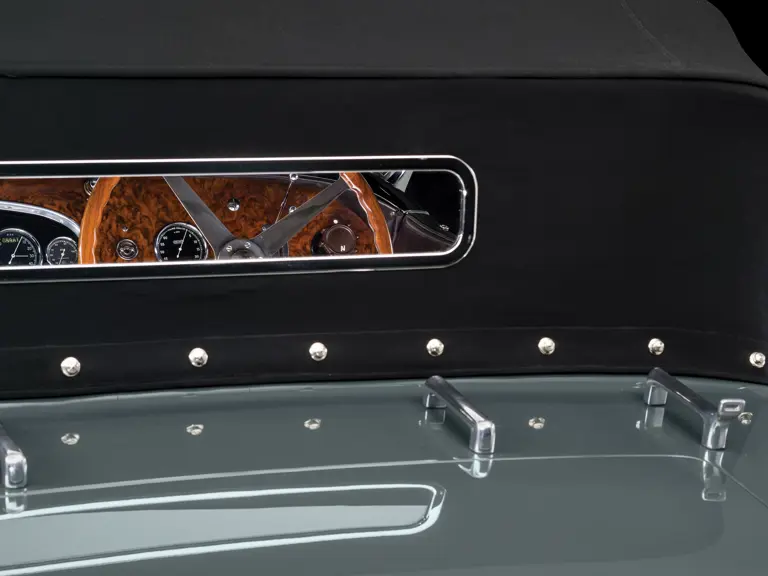
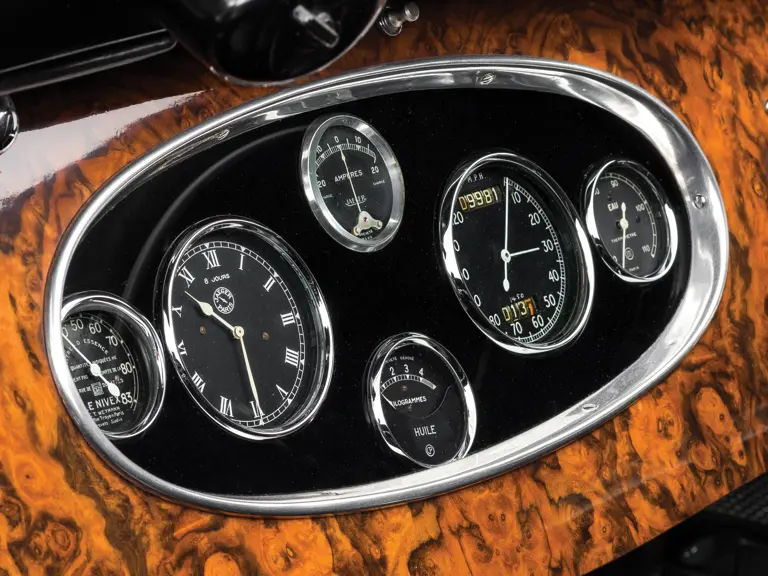
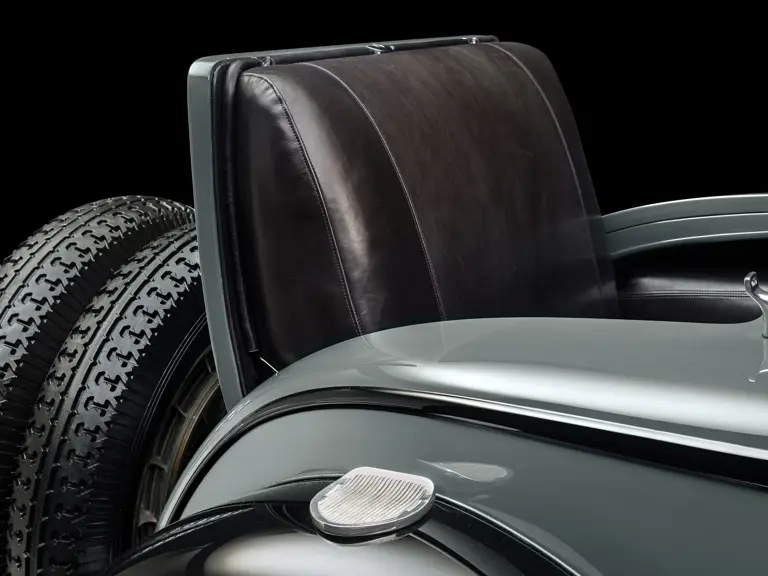
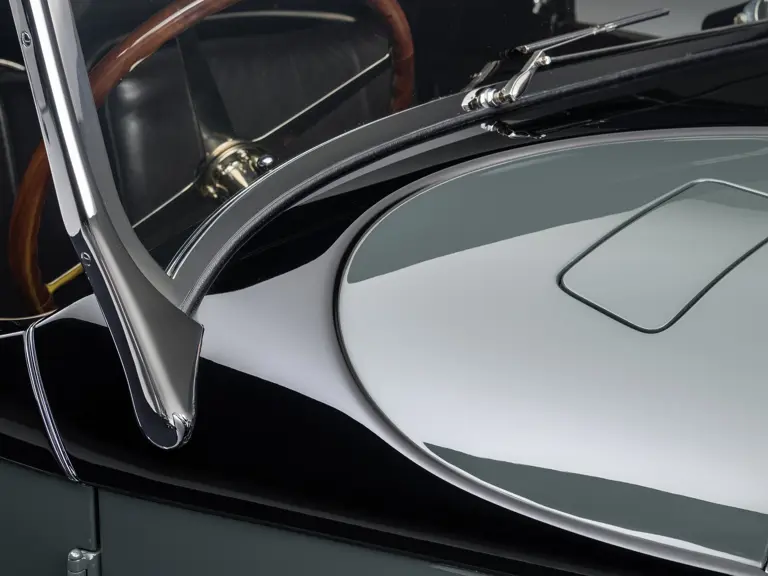
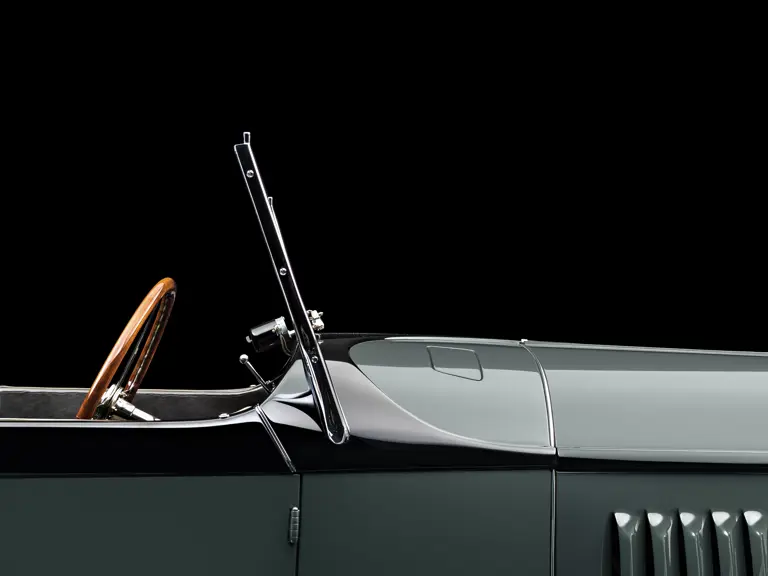
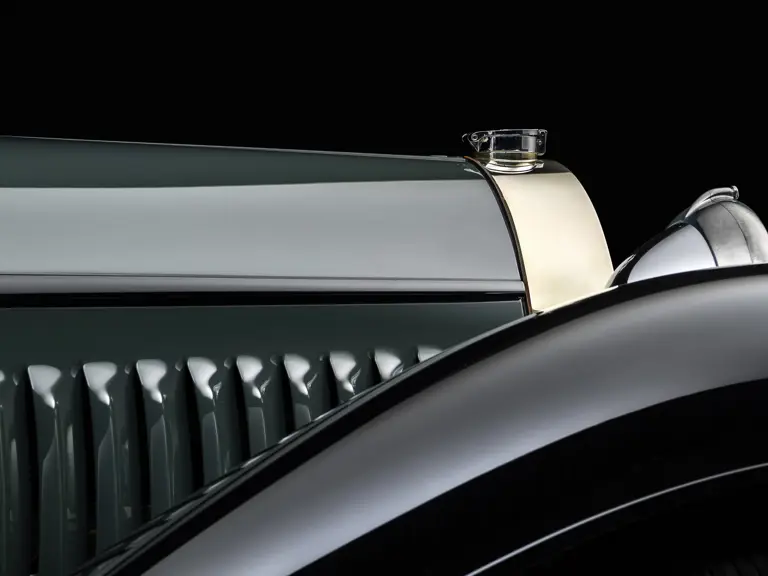
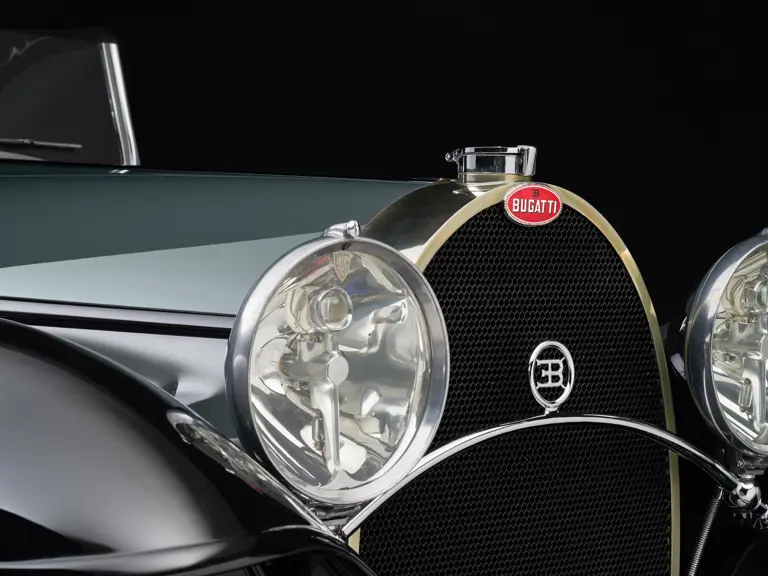
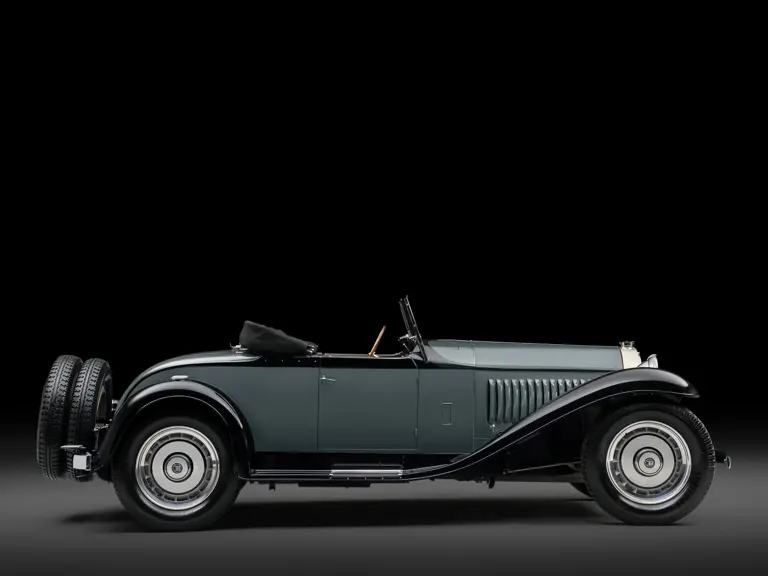
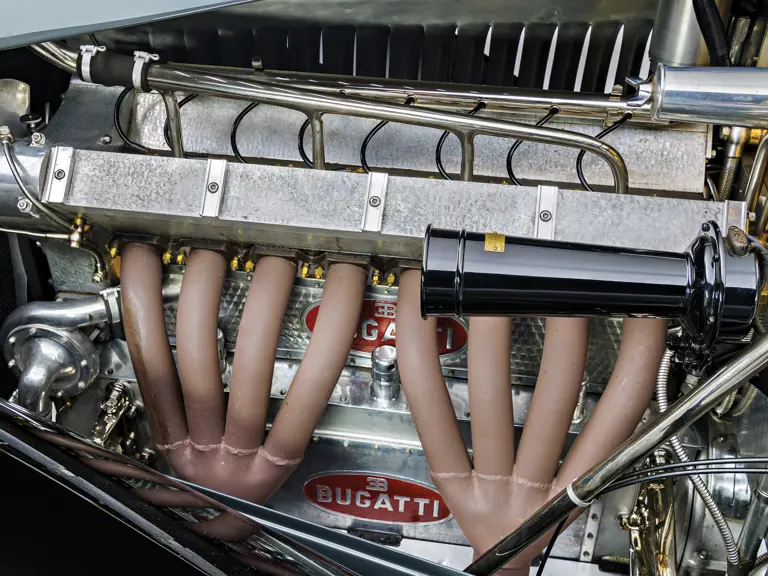
 | Cernobbio, Italy
| Cernobbio, Italy
